Japanese barberry 'Golden Torch' Berberis thunbergii 'Golden Torch'

ABOUT
'Golden Torch' is a narrowly-upright, slow-growing, deciduous, spiny shrub, to 1.2m tall, with bright yellow to yellow-green foliage that becomes flushed with pink and orange hues in autumn. Small, white spring flowers are followed by red fruits
About this plant
 Names
NamesSynonyms
Japanese Barberry, Thunberg's Barberry, Red Barberry, Golden Torch Barberry.
Common names
Berberis thunbergii 'Golden Torch'.
 Characteristics
CharacteristicsLife cycle
Perennials
Foliage type
Deciduous
Color of leaves
Yellow
Flower color
Yellow
Height
4 feet (1.22 meters)
Spread
2 feet (0.61 meters)
Plant type
Shrub
Hardiness zones
5
Native area
Japan
Benefits
 General Benefits
General Benefits- Year-round Interest: Provides visual interest across all seasons with changing foliage color and persistent berries.
- Easy to Grow: Adapts well to a wide range of soil types and conditions, making it a hassle-free choice for many gardeners.
- Drought Tolerant: Once established, it has good resistance to drought, reducing the need for frequent watering.
- Compact Size: Its height and spread are manageable, making it suitable for small gardens or tight spaces.
- Colorful Foliage: Features vibrant foliage that adds a splash of color to any landscape.
- Attracts Wildlife: Berries produced by the plant can attract birds to the garden, providing ecological benefits.
- Low Maintenance: Requires minimal pruning and care, useful for gardeners looking for low-maintenance plants.
- Erosion Control: Can be used on slopes or areas prone to erosion to help stabilize the soil.
- Privacy Hedge: Can be used as a hedge or screen, offering privacy to garden spaces.
- Decorative Barrier: With its thorny stems, it can serve as a protective barrier deterring unwanted foot traffic.
 Medical Properties
Medical PropertiesThis plant is not used for medical purposes.
 Air-purifying Qualities
Air-purifying QualitiesThis plant is not specifically known for air purifying qualities.
 Other Uses
Other Uses- Japanese barberry cultivars like 'Golden Torch' can be used in festive decorations, particularly for Christmas and autumn, because of their bright foliage and berries.
- The thorny branches may be utilized as a natural deterrent to keep animals and intruders away from private properties.
- Because of its compact size and decorative appeal, 'Golden Torch' can be used in theme gardens like fairy or miniature gardens.
- Its contrasting color can be used to create a focal point in landscape design, drawing the eye to specific areas of a garden or yard.
- For educational purposes, such as in schools or botanical gardens, 'Golden Torch' can be used to teach about plant adaptation and ornamental horticulture.
- Its dense growth habit allows it to be used as a windbreak or to reduce noise pollution when planted in hedges or shelterbelts.
- The branches and foliage can be utilized in the art of bonsai due to the plant's ability to adapt to pruning and shaping.
- During fall, the leaves can be collected and used in craft projects for their bright, warm colors.
- In photography and painting, the plant's stunning winter appearance with red berries against snow can serve as an inspiring subject.
- Japanese barberry 'Golden Torch' can also be integrated into wildlife gardens as its berries provide food for birds during the colder months.
Interesting Facts
 Feng Shui
Feng ShuiThe Japanese Barberry is not used in Feng Shui practice.
 Zodiac Sign Compitability
Zodiac Sign CompitabilityThe Japanese Barberry is not used in astrology practice.
 Plant Symbolism
Plant Symbolism- Protection: Barberry plants, including Berberis thunbergii 'Golden Torch,' are often associated with protection due to their thorny branches, which can deter animals and intruders.
- Purity: The bright, golden-yellow foliage of 'Golden Torch' may symbolize purity and new beginnings, reflecting the clean and vibrant growth of the plant.
- Sharpness: The thorns of the barberry also represent sharpness or a keen wit, symbolizing the ability to navigate through tricky situations effectively.
 Water
WaterThe Japanese Barberry 'Golden Torch' prefers soil that is evenly moist but well-drained; overwatering can lead to root rot. During the growing season, generally in spring and summer, water the shrub deeply once a week with about 1-2 gallons, depending on the size and the weather conditions. If it rains substantially, you can skip watering for that week. In the cooler months of fall and winter reduce watering to every two weeks or less, monitoring the soil moisture level to prevent the soil from becoming too dry or too waterlogged. During drought conditions or extreme heat, you may need to water more frequently. It is best to water early in the morning to minimize evaporation and allow foliage to dry out during the day.
 Light
LightThe Japanese Barberry 'Golden Torch' thrives best in full sun to part shade conditions. Ideally, it should receive at least 6 hours of direct sunlight daily for optimal growth and foliage color, but it can also tolerate light shade, especially in the hotter parts of the day. The plant is adaptable but placing it in too much shade may result in less vibrant foliage and reduced flowering.
 Temperature
TemperatureJapanese Barberry 'Golden Torch' is a hardy shrub that can withstand a range of temperatures. It's cold-hardy in USDA zones 4 through 8 and can tolerate minimum temperatures down to -30°F without significant damage. It performs best in a temperature range between 60°F and 70°F during the growing season. Extreme heat above 95°F may stress the plant, especially if combined with drought conditions, so make sure to provide sufficient water during hot spells.
 Pruning
PruningPrune the Japanese Barberry 'Golden Torch' to maintain its shape and to remove any dead or damaged branches. The best time to prune is in late winter or early spring, just before new growth begins. Light pruning can be done throughout the growing season to keep the shrub tidy. Pruning is also important to encourage airflow, which can help prevent diseases.
 Cleaning
CleaningAs needed
 Soil
SoilJapanese Barberry 'Golden Torch' prefers well-draining soil with a pH range of 6.0 to 7.5. A good soil mix might include loam, peat moss, and sand or perlite to ensure water drainage while retaining adequate moisture. Regular garden soil amended with organic matter should suffice to meet its needs.
 Repotting
RepottingJapanese Barberry 'Golden Torch' doesn't commonly require frequent repotting as it's usually grown outdoors. When grown in containers, repot every 2-3 years to refresh soil and allow room for growth.
 Humidity & Misting
Humidity & MistingJapanese Barberry 'Golden Torch' is tolerant of a wide range of humidity levels and does well in the humidity normally found outdoors in its hardiness zones. It does not require any special humidity adjustments when planted in the ground.
 Suitable locations
Suitable locationsIndoor
Place in bright light, minimal watering, well-draining soil.
Outdoor
Full sun to part shade, well-draining soil, space out plants.
Hardiness zone
4-8 USDA
 Life cycle
Life cycleThe life of Japanese Barberry 'Golden Torch' begins with seed germination, often facilitated by a period of cold stratification to break seed dormancy. Upon germination, the seedling emerges and establishes itself, growing into a juvenile plant with immature foliage distinct from mature leaves in color and shape. As it transitions to maturity, 'Golden Torch' develops its characteristic bright golden-yellow foliage and a more upright habit. The mature shrub reaches reproductive age, producing small yellow flowers that pollinators like bees visit, which then turn into bright red berries in late summer to autumn. These berries serve as a dispersal mechanism when consumed by birds and other wildlife, which excrete the seeds, thereby initiating new cycles of germination. The plant may also spread vegetatively through root suckers, contributing to its potential to reproduce and sometimes become invasive in the landscape.
 Propogation
PropogationPropogation time
Spring to Summer
Japanese barberry, specifically the 'Golden Torch' variety, is typically propagated during the dormant season, which is late fall to early winter. The most popular method for propagating this plant is through softwood cuttings, generally taken in late spring or early summer when the plant's growth is new and tender but has not yet hardened. Cuttings should be about 4 to 6 inches long, and it's important to make a clean cut just below a leaf node using a sharp, sterile pruning tool. The lower leaves are removed, and the cut end can be treated with a rooting hormone to encourage root development. The cutting should then be placed in a well-draining potting mix, ensuring that at least one node is buried in the soil. The pot should be kept in a warm, indirect light setting and maintained with consistent moisture until roots have established, a process that can take several weeks, after which the young plants can be gradually acclimatized to outdoor conditions before planting in the ground.

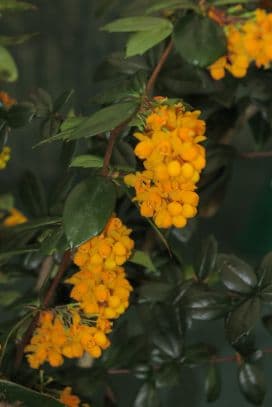
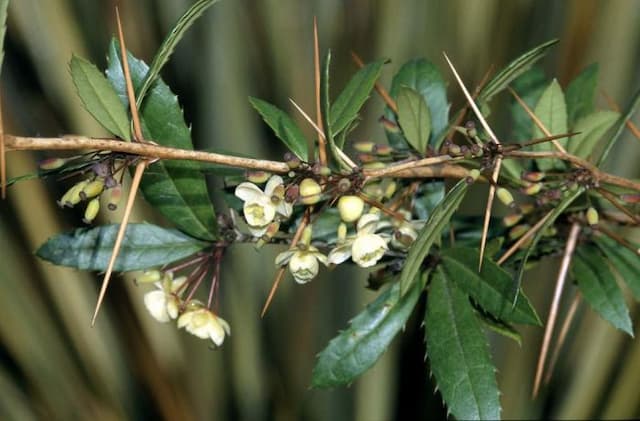
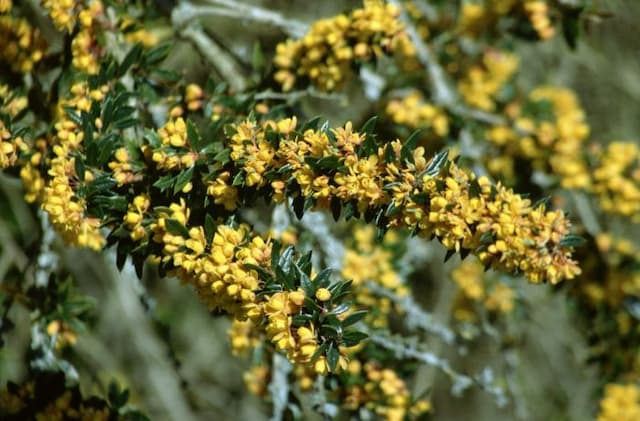

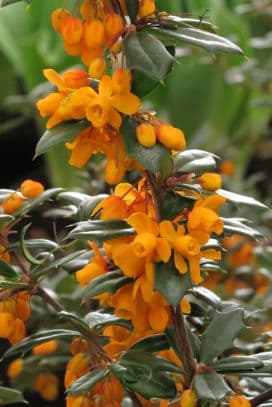
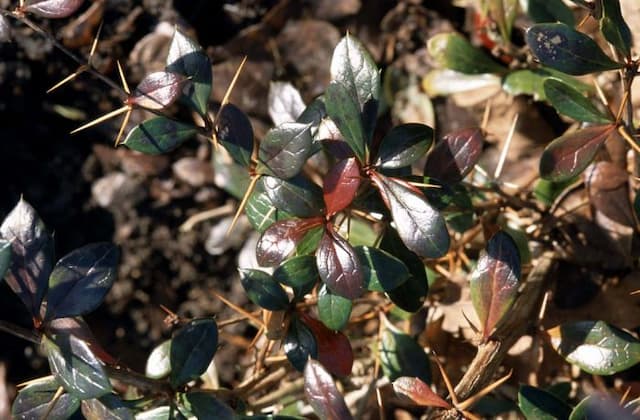


![Japanese barberry [Bonanza Gold]](/_next/image?url=https%3A%2F%2Fplants-admin.emdemapps.com%2Fimages%2Fplants%2F%2Fimages%2F604b5385e413f.png&w=640&q=75)